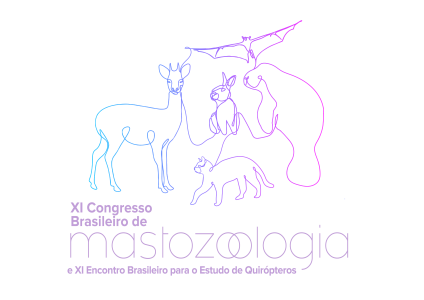Dados do Trabalho
Título:
ADAPTIVE REGIMES AND EVOLUTION OF SEXUAL DIMORPHISM IN PRIMATES
Resumo:
Primates have a complex life history, wide geographic distribution and ecological and evolutionary variability, characteristics that may reflect their phenotype variation. Sexual dimorphism can be expressed within the phenotype, varying in magnitude and direction among primate species and clades, not being necessarily uniform throughout the evolutionary processes. The present study aimed to describe the variation of sexual size dimorphism in the mandible of these animals, as well as to analyze different hypotheses of adaptive regimes, such as mating systems, locomotion and diet through the selection of evolutionary models (Brownian motion and Ornstein-Uhlenbeck). Here we demonstrate that dimorphism can be manifested by the increase in size of the mandible of males in relation to females (male-biased, here represented by positive values), or by the increase of females in relation to males (female-biased, here represented by negative values). Furthermore, dimorphism in primates is the result of an adaptive process, where sexual selection, under an OU model with multiple evolutionary rates, was the mechanism that better explain the evolution of sexual size dimorphism in primates. Sexual dimorphism is greater and male-biased when in polygynous and polygynandrous systems, being smaller in monogamous and female-biased in polyandrous mating systems. This study concluded that sexual selection was more important than the ecological hypotheses of natural selection in explaining intersexual variation in size between primate species. The Brownian model, commonly used in comparative studies, was one of the most poorly fitted model to explain the variation of the data here sampled, being often penalized when compared to OU models during model selection procedures. These results show the importance of using different evolutionary models and adaptive regime hypotheses when it comes to tracing the evolution of phenotypic traits.
Financiamento:
CAPES, FAPERJ, CNPq
Área
Evolução
Autores
Natália Melo, Leandro Monteiro, Nilton Cáceres, Jamile Bubadué
